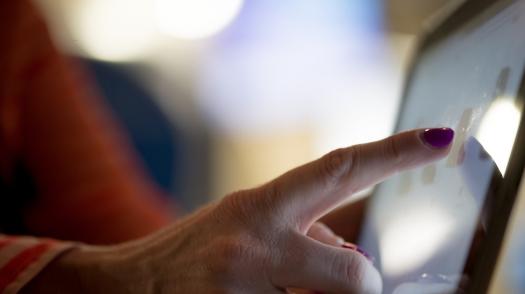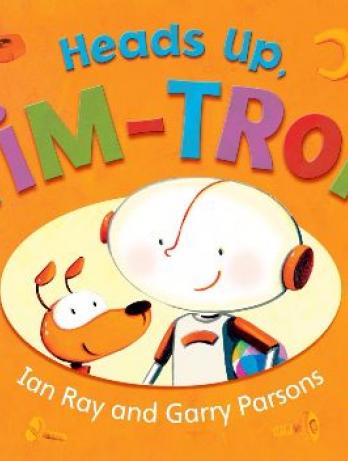Acquired brain injury isn’t always well understood in the world at large.1 Some parents say they hadn’t heard of it themselves before their child had an acquired brain injury. So it’s understandable that some teachers may not know a great deal about the condition.
It’s often up to a child’s parents to pass on the knowledge they’ve picked up along the way.
This section aims to give you ideas about how you can talk with teachers and other education professionals about acquired brain injury. You can always direct them to our site, which has dedicated information for teachers. Read more here. It’s in the classroom that some of the most common misunderstandings about acquired brain injury can happen.2
The fatigue some children experience might be misunderstood as laziness, or poor concentration as a bad attitude.3
We’ve included some ideas for talking about what acquired brain injury is, how the effects of the injury may make themselves known, and how a teacher can help.
Hopefully, the misunderstandings can be avoided as much as possible if parents talk to teachers and vice versa.4
If our online resource has been useful to you, then perhaps you could pass on the website address to your child’s teacher or order one of these booklets to give to your child’s teacher. Teachers may welcome information about acquired brain injury, especially if they are not very familiar with the effects that can result from ABI.
Teachers are very involved in the Special Educational Needs process. Read our guide to this process.
Defining acquired brain injury
Acquired brain injury can be defined as follows: “You might hear it shortened to ‘ABI’. The ‘acquired’ part means only that the child wasn’t born with their injury – it is something that has happened later.”
Other key points to get across are:
- Children and adults are affected very differently by acquired brain injury.5, 6
- An injury can happen when a child’s growing brain ‘still has unfinished business’. And a child may not go on to pick up some of the skills they otherwise would have.7
- Some children make a full physical recovery, but there may be ‘hidden’ effects of their brain injury that aren’t easy to spot.8
- Some of the effects of acquired brain injury may take weeks, months and sometimes years to come to the surface.9 Some may only become clear in secondary school.10
- While there are some broad things we can say about acquired brain injury, each child responds completely differently.11, 12
- Nobody has all the answers with acquired brain injury. It’s not clear at what speed recovery will take place, or if a child will ever be quite as they were.13
But a teacher will probably want to know what a brain injury means in the classroom in a very practical sense.
If we look again at some common effects of acquired brain injury, we can see how some children may find learning environments difficult:
- Weakness of limbs, difficulties getting around.14
- Tiredness, struggling with concentrationn – often talked about as ‘fatigue’ by professionals.15, 16
- Changes in behaviour – irritability, behaving impulsively or inappropriately.17
- Difficulties learning new things.18, 19
- Problems with memory.20
- Difficulty processing information.21
- Emotional difficulties such as anxiety or depression.22, 23
- Difficulties understanding and using language, difficulties keeping up with conversations.24, 25
- Difficulties organising and planning26, 27, difficulties carrying out everyday tasks.
- Difficulty with empathy- putting themselves ‘in someone else’s shoes’, and awareness about their own situation.28, 29
It’s important that teachers know as much as possible about how your child might be affected by these things. If you’re able to, sit down with your child’s teacher(s) as soon as possible to talk things over.30, 4
If you can include the school’s Special Educational Needs Coordinator, then do. Each school is required to have one of these professionals by law.31 Read more about the role of the SENCO
Some children have Special Educational Needs as a result of their acquired brain injury. The process of describing those needs and providing for them is covered in a different section.
What sort of information would a teacher need?
This checklist may be useful in thinking about what you can tell a teacher32 (many thanks to Sue Walker, drawn from her book Educational Implications of Acquired Brain Injury: a resource for educational psychologists):
- When and how the injury happened
- The type and severity of the injury
- How old your child was at the time of the injury
- How the recovery has gone so far
- Were there any other children at the school or in the family involved in or witness to a traumatic brain injury?
- Does your child have any sensory difficulties?
- Are there any physical difficulties that might affect your child’s school life? (access to classrooms, PE)
- Your child’s strengths and weaknesses – perhaps they struggle with concentration or communication
- Do they have any therapy requirements which might have an impact at school?
- Do they require any special devices or equipment?
- How is their personal care? Do they struggle with any aspects of daily living?
- Do they take any prescribed medication?
- Do they have seizures?
- Are there any other safety precautions to think of?
- Do you or your child have any particular concerns about the return to school?
- Are there any behavioural difficulties?
- Do you have other children at the school who may be affected by all the changes that have happened in the family?
How does a teacher know what to look for?
It can be hard for teachers (and anyone else) to identify the effects of brain injury. This is partly because of the ‘hidden’ nature of these effects.33, 34
We also know that there can be a lot of ‘overlap’ in the effects of an acquired brain injury.35 The effects of fatigue (or tiredness), for example, might make a child more irritable.36 It may also slow down the speed at which they’re able to process information.
Not being able to answer a question quickly might lead to frustration on a child’s part, and this in turn might lead to challenging behaviour.
Talking regularly with your child’s teacher, and being honest and straightforward about the things you’ve noticed about your child can be very helpful.
Talking with other children in class
In some circumstances it may be helpful for other children to have some understanding of changes their classmate has experienced. This may form part of the preparation for your child returning to school. After all, we know that an acquired brain injury may affect the way a child speaks with other children.37
We know that a child with acquired brain injury might say or do inappropriate things, or things that seem odd to other children.38, 39
Tiredness may mean they don’t have the energy to socialise.40 Other children in the school may not understand these difficulties. And there’s a risk that a child with acquired brain injury may become isolated from their classmates.41, 42 This means talking with their classmates can be useful thing for a teacher to do.
Talking with children about acquired brain injury demands a great deal of sensitivity and careful consideration from education professionals. It’s important that you as parents are consulted about this. There are no set rules about how to go about this, partly because each set of circumstances is so different. Any conversation with a class must account for the age and understanding of the children, and must be pitched at an appropriate level.
Ask the school about a Circle of Friends scheme
Circle of Friends schemes started in America, and are a way of trying to help children who are experiencing difficulties in school feel more included.
The idea is that teachers recruit volunteers from among the other children at the school. This ‘circle’ of children or young people will then support your child in their daily school lives.
The circle meets regularly with teachers to discuss any problems they’ve had along the way and to set goals. Read more about Circle of friends here.


